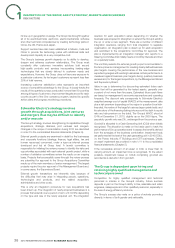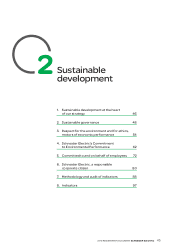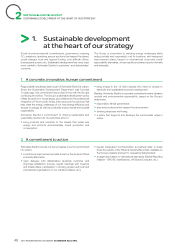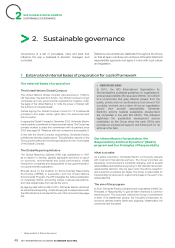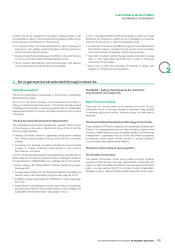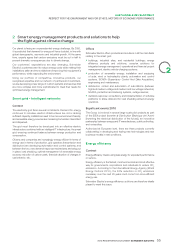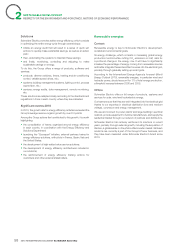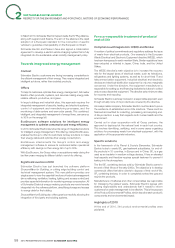APC 2010 Annual Report Download - page 50
Download and view the complete annual report
Please find page 50 of the 2010 APC annual report below. You can navigate through the pages in the report by either clicking on the pages listed below, or by using the keyword search tool below to find specific information within the annual report.
SUSTAINABLE DEVELOPMENT
2SUSTAINABLE GOVERNANCE
>
2. Sustainable governance
Governance is a set of processes, rules and laws that
infl uence the way a business is directed, managed, and
controlled.
Reference documents are distributed throughout the Group
so that all team members can embrace Schneider Electric’s
responsibility approach and apply it in line with local culture
and legislation.
1 External and internal bases of preparation for a solid framework
Our external bases of preparation
The United Nations Global Compact
The United Nations Global compact was launched in 1999 by
UN Secretary-General Kofi Annan, the Global Compact brings
companies and non-governmental organisations together under
the aegis of the United Nations to “unite the power of market with
the authority of universal ideals”.
Parties signing the Global Compact commit to 10 fundamental
principles in four areas: human rights, labor, the environment and
anti-corruption.
In signing the Global Compact in December2002, Schneider Electric
made a public commitment to these universal values. The Group has
primarily worked to share this commitment with its partners since
2003 (see page 59 “Relations with sub-contractors and suppliers”)
In line with the Global Compact requirements, Schneider Electric
publishes an annual progress report. This publication reports on the
Group’s action plans and monitoring indicators for the 10principles
of the Global Compact.
The Global Reporting Initiative
The Global Reporting Initiative (GRI) was established in1997
as a mission to develop globally applicable directives to report
on economic, environmental and social performance; initially
intended for companies and subsequently for any governmental or
non-governmental organisation.
Brought about by the Coalition for Environmentally Responsible
Economies (CERES) in association with the United Nations
Environmental Program, the GRI integrates the active participation
of companies, NGOs, accounting bodies, business associations,
and other stakeholders from across the world.
By aligning itself with the GRI in2010, Schneider Electric reinforced
its extra-fi nancial reporting. A table showing its correspondence with
the GRI indicators is included at the end of this document (see page
92).
>VIEW ON ISO26000
In 2010, the ISO (International Organisation for
Standardisation) published guidelines on organisations’
societal responsibility (ISO standard 26000). ISO26000
is a compromise that gets different players from the
public, private and non-profi t sectors, from around 100
countries, involved, and a vision of how an organisation
should view societal responsibility. Schneider
Electric’s actions towards sustainable development
are completely in line with ISO26000. This standard
legitimises the sustainable development actions
undertaken by the Group since the early 2000s and
provides an educational support and framework for its
actions in the fi eld.
Our internal basis of preparation: the
Responsibility & Ethical Dynamics* (R&ED)
program and Our Principles of Responsibility
What is at stake
As a global corporation, Schneider Electric continuously interacts
with local and international partners. The Group’s borders are
expanding, its environment is constantly changing, and its societal
responsibilities and activities are growing. In this international context,
reprehensible behavior may be seen when the ethics inspection
and prevention processes are fragile. The Group is responsible for
implementing its resources to support employees in the event of an
ethical dilemma.
The aim of the program
In 2002, Schneider Electric published a set of guidelines entitled Our
Principles of Responsibility to give all team members a common
reference point. The document outlines the Group’s commitments
to each of its stakeholder groups: the Company’s employees, its
economic partners (mainly clients and suppliers), shareholders, the
community and the planet.
* Responsibility & Ethical Dynamics
2010 REGISTRATION DOCUMENT SCHNEIDER ELECTRIC48


